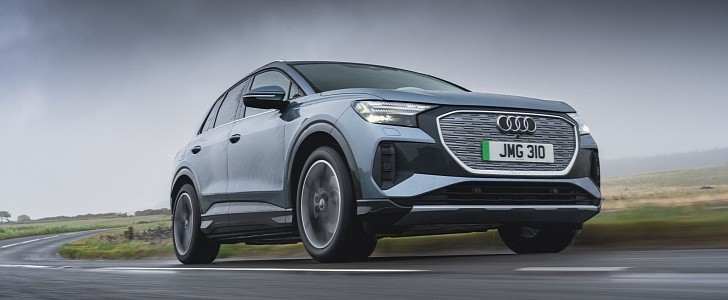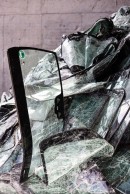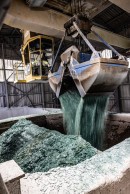Audi has announced a new pilot program that involves recycling windows and installing recycled windowpanes in the Q4 e-tron. The pilot operation will go on for an entire year, and it is a collaboration between Saint-Gobain Glass, Saint-Gobain Sekurit, Reiling, and Audi, of course. If the program is successful, it will lead to expanding the use of recycled glass.
Audi's latest project involves recycling car windows with faults by developing a closed material circuit for damaged car glass. As it turns out, there is no such program in the world as far as automotive-grade glass is concerned, and this needs to change.
Thanks to Audi's involvement, glass that goes to Reiling Glass Recycling will be taken through a multi-stage process that will turn it into prime automotive glass again.
Just like metal or plastic, recycling glass involves heat, as well as filtering impurities from the finished product. In the case of automotive glass, the objects that need to be recycled must be broken into small pieces. From there, the glue, as well as the glue residue, must be eliminated.
The process then involves melting down the selected glass granulate and making new plate glass. From there, the resulting raw material is turned into a car window through specific processes. From there, the resulted windows are sent to the factory, where they are installed in Audi Q4 e-tron vehicles.
It sounds easier than it is to accomplish, but once this is turned into a process that produces reliable results, vehicle manufacturers will be able to have recycled windows in their new models, which means a reduction of carbon emissions from the manufacturing process.
Using recycled windows reduces the carbon dioxide emissions of the glass manufacturing process by 30 percent. Audi wants to cut its emissions as a company as much as possible, so recycling glass would be an important part of the process if it yields high-grade car glass with a preserved and repeatable quality.
Thanks to Audi's involvement, glass that goes to Reiling Glass Recycling will be taken through a multi-stage process that will turn it into prime automotive glass again.
Just like metal or plastic, recycling glass involves heat, as well as filtering impurities from the finished product. In the case of automotive glass, the objects that need to be recycled must be broken into small pieces. From there, the glue, as well as the glue residue, must be eliminated.
The process then involves melting down the selected glass granulate and making new plate glass. From there, the resulting raw material is turned into a car window through specific processes. From there, the resulted windows are sent to the factory, where they are installed in Audi Q4 e-tron vehicles.
It sounds easier than it is to accomplish, but once this is turned into a process that produces reliable results, vehicle manufacturers will be able to have recycled windows in their new models, which means a reduction of carbon emissions from the manufacturing process.
Using recycled windows reduces the carbon dioxide emissions of the glass manufacturing process by 30 percent. Audi wants to cut its emissions as a company as much as possible, so recycling glass would be an important part of the process if it yields high-grade car glass with a preserved and repeatable quality.



























